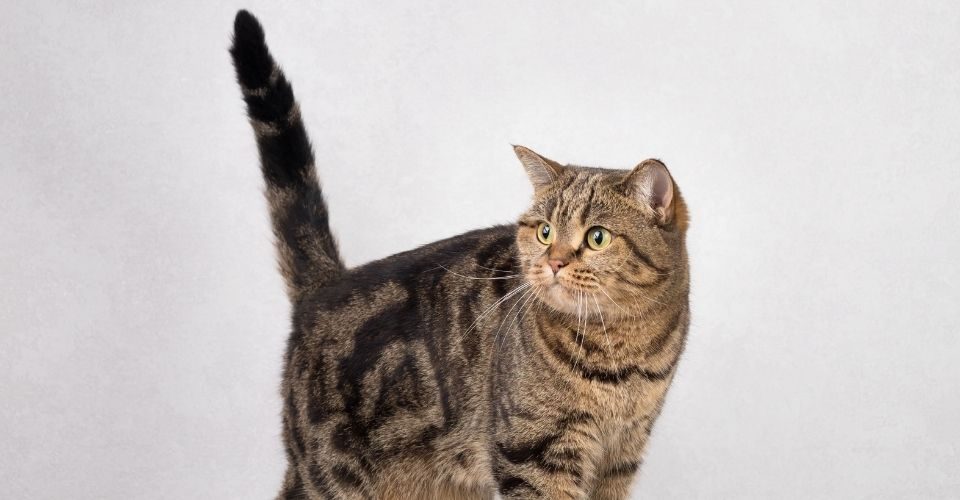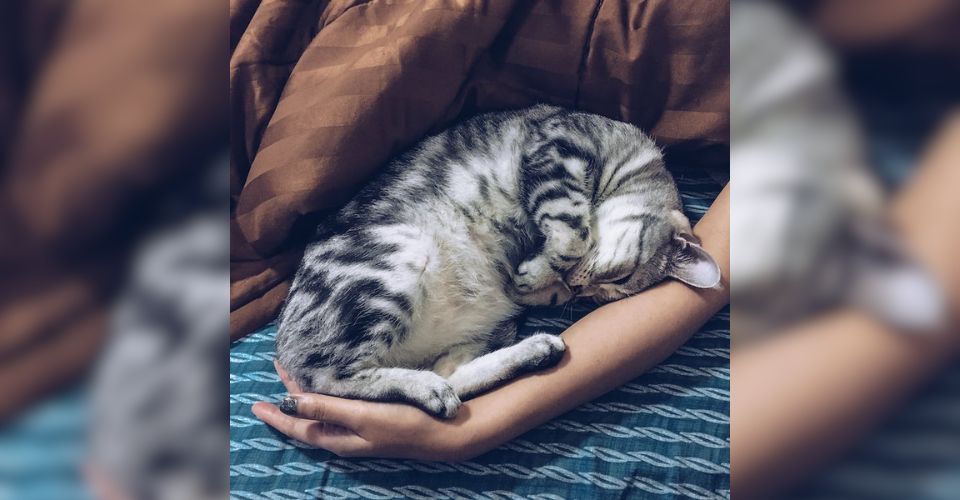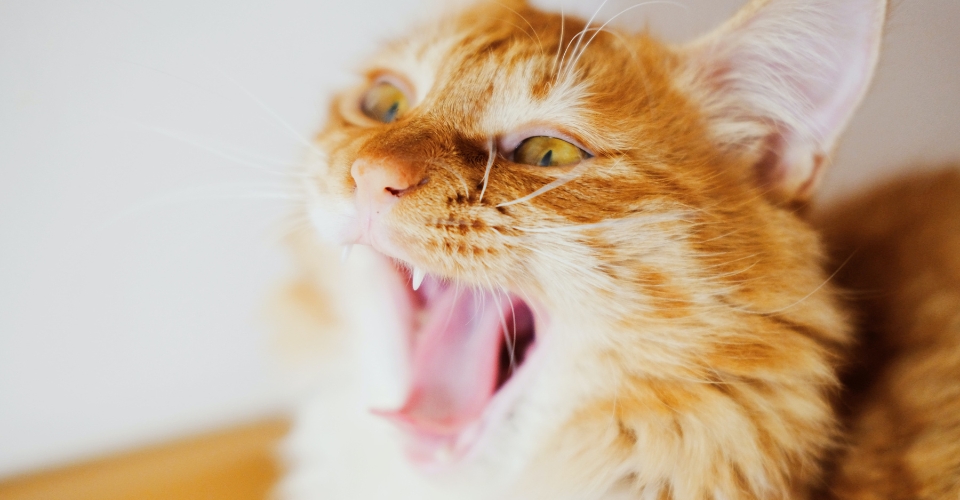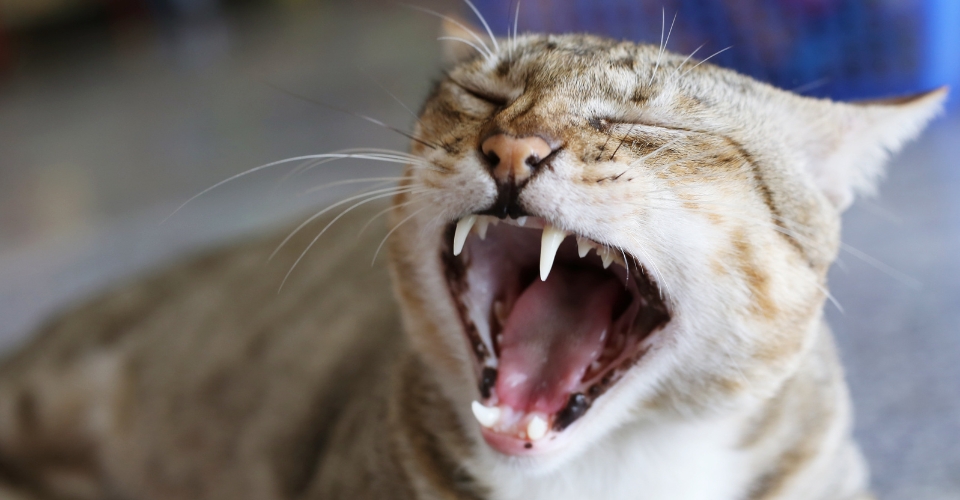Did you just notice your cat wagging her tail? Do you want to know why do cats wag their tails? What are the possible reasons behind a cat wagging tail? Why do cats wag their tails while lying down?
Like other pets, such as dogs, cats also wag their tails. However, the underlying reasons can be different. If you want to understand the meaning of a cat wagging tail, keep on reading the article.
What Does It Mean When A Cat Wags Its Tail?
Sometimes, it can be challenging to understand the body language of a cat. Cats are complicated creatures, and the way they express themselves isn’t always clear. If you start petting them at the wrong moment, excessive meowing, yowling, scratching, and swatting could occur.
It’s a widespread misunderstanding that cats wag their tails only when they’re furious, but that is just not right. In addition to being a sign of a furious cat, a cat wagging tail can be an indication of many other things, such as fear, aggression, pain, and much more.
We delve into some of the reasons below.

When Cats Greet Others
When your cat sees or greets another cat, she elevates her tail in the air—this is their way of greeting each other. Moreover, allorubbing (mutual head rubbing) is also seen as cats’ way of greeting. There is a possibility that your cat will follow the same pattern on seeing her owners. Your cat wagging tail on seeing you or rubbing her head against your leg would be her way of greeting:
“Hi my hooman, Nice to meet you!”
When Cats Are Aggressive
Aggression level differs from cat to cat. A tail arched upwards at its base and then curved down toward the legs indicates that the cat is aggressive. You can also notice the cat’s hairs along her spine and tail standing upright at times, which may be visible. Piloerection means that the cat is aggressive and may strike any time now.
When Cats Are Afraid
Keep an eye out if the hair along your cat’s tail and spine are standing upright, a condition known as piloerection, as mentioned above. Fear and protective aggressiveness are indicated by erect hairs on a cat’s back. According to one hypothesis, the cat is attempting to seem bigger to scare a prospective adversary. The cat will see everything, even their loving cat owners, as a potential threat in this situation. So it is better that you stay away from her.
The main takeaway is that piloerection is an indication of a scared cat and not of an aggressive cat. When you encounter a cat with her hair and spine standing upright, move back. Try to calm your cat by recognizing and removing the stressors around.
When Cats Are Unhappy
A cat wagging her tail rapidly back and forth indicates that she is sad about something and would like to be left alone, according to Catster. If you see your cat’s tail is swishing, give her some space.
You’ll most likely encounter this cat tail movement when they’re put in an unpleasant situation, such as taking her to the vet.
When Cats Are Playing
This cat tail swishing is sometimes confused with the furious low flick, although it couldn’t be further from the truth. When your cat feels a bit playful, she will swish her tail quickly from side to side, typically followed by a pounce. When trying to play with toys or another cat, this behavior is usually accompanied by dilated pupils and erect ears pointing forward.

When Cats Are in Pain
Tail wagging might sometimes indicate that your cat is in discomfort. This type of tail movement is usually rapid and unrelated to anything else that is going on.
Watching your cat wagging tail, you should start looking for additional signs of sickness in cats. Lethargy, hiding, aggressiveness, and a change in appetite are some of the symptoms. These symptoms indicate that something is wrong with your cat, and you need to take her to a veterinarian.
When Cats Are in Search of Prey
Wagging cats’ tails might indicate that your cat is on the prowl. You’ll see that their tail flutters back and forth in a fascinating manner. You may have witnessed your cat jumping at some prey—a cat toy in your living room.
You may have noticed your cat wagging her tail and then quickly pouncing at toys, laser light, stuffed catnip, or whatever cat toy she is playing with.
When Cats Are Excited
You’ll notice your cat’s tail moving to and fro when they’re thrilled. From top to bottom, the tail will be erect and quivering. This is a positive indication when you enter the room since it implies that your cat is excited to see you. Cats may use this tail movement coupled with vocalizing to tell other cats their readiness for interaction.
What Is the Cat Tail Made up Of?
A cat’s tail is an extension of her spine and comprises vertebral bones, blood vessels, and muscle. Although the spinal cord terminates just before the tail, many nerves branch out and pass through the tail.
The vertebrae (tail bones) are larger at the base and smaller at the tip. Soft discs provide flexibility and cushion the gaps between the vertebrae; the tail muscle and nerves support the tail movement.
Can Cats Control Their Tails?
Are you wondering, can cat control their tails?
Yes, cats can control their tail; however, cats express their feelings and emotions through tails’ movement. Therefore, tail movement can be involuntary in the above-discussed conditions.
Certain movements of your cat’s tail may be unintentional. We blink our eyes without thinking about it; yet, if you want to stop blinking for a time or keep your eyes closed, you may do it. Cat tail twitching when she is sleeping or dreaming is an example of involuntary cat tail movements.
As discussed above, a cat tail is a complicated network of muscles, nerves, tendons, ligaments, and bones that run from the base to the tip. This allows a cat to have complete control over its movements, emotions, and postures. This is how cats improve their balance, improve their landings, run quicker, and communicate their feelings. It is subject to reflexes and involuntary movements, much like any other body component.
Why Do Cats Flick Their Tails?
Cats use their tails to show or express their feeling. Usually, cats flick their tails to reflect they are unhappy.
It might also indicate that your cat is in the mood to engage in some playful behavior. You’ll notice they start to flick their tail when they’re concentrated or a little worked up. Consider purchasing a fun toy for your cat to play with. You can also have interactive play sessions with your cat to satisfy their desire for entertainment.
While your cat is resting, you may see her twitching her tail. Your cat may be flicking her tail in the same way as dogs do when they sleep.
What Does It Mean When a Cat Wags Her Tail?
Like other animals, cats too wag their tail; basically, they wag or flicks the tail to express their emotions or feelings.
A cat may be going to pounce if she is lying on her stomach and waving her tail. Many cats wag their tails to indicate that they want to play, resulting in their tails thumping on the ground.
In other cases, she can lay down and flicks the tail—it may be possible that she is asleep or not well, that’s why she is lazy.
We hope all your concerns about a cat wagging tail have been resolved. Where a cat tail puffed up means that her hunting instincts have been turned on, piloerection indicates that she is afraid. Similarly, where a cat tail erect and quivering means that she is excited and happy, a cat tail rapidly moving back and forth indicates that she is unhappy.





